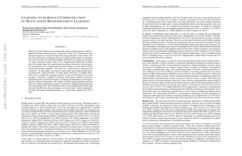STMGCN: Mobile Edge Computing-Empowered Vessel Trajectory Prediction Using Spatio-Temporal Multigraph Convolutional Network
—The revolutionary advances in machine learning and data mining techniques have contributed greatly to the rapid developments of maritime Internet of Things (IoT). In maritime IoT, the spatio-temporal vessel trajectories, collected from the hybrid satellite-terrestrial automatic identification system (AIS) base stations, are of considerable importance for promoting traffic situation awareness and vessel traffic services, etc. To guarantee traffic safety and efficiency, it is essential to robustly and accurately predict the AIS-based vessel trajectories (i.e., the future positions of vessels) in maritime IoT. In this work, we propose a spatio-temporal multigraph convolutional network (STMGCN)-based trajectory prediction framework using the mobile edge computing (MEC) paradigm. Our STMGCN is mainly composed of three different graphs, which are, respectively, reconstructed according to the social force, the time to closest point of approach, and the size of surrounding vessels. These three graphs are then jointly embedded into the prediction framework by introducing the spatio-temporal multigraph convolutional layer. To further enhance the prediction performance, the self-attention temporal convolutional layer is proposed to further optimize STMGCN with fewer parameters. Owing to the high interpretability and powerful learning ability, STMGCN is able to achieve superior prediction performance in terms of both accuracy and robustness. The reliable prediction results are potentially beneficial for traffic safety management and intelligent vehicle navigation in MEC-enabled maritime IoT.
PDF Abstract
